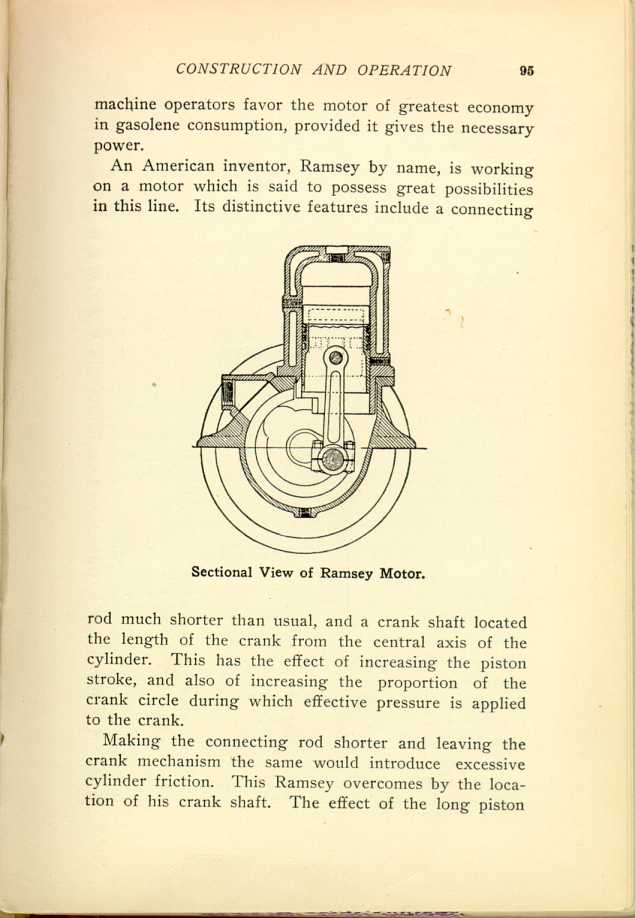| CHAPTER IX.
SELECTION OF THE MOTOR. Flying Machines: Construction and Operation: A Practical Book Which Shows, in Illustrations, Working Plans and Text, How to Build and Navigate the Modern Airship. | ||
Features of Darracq Motor.
Horizontal motors were practically abandoned some time ago in favor of the vertical type, but Santos Dumont had a logical reason for reverting to them. He wanted to secure a lower center of gravity than would be possible with a vertical engine. Theoretically his idea was correct as the horizontal motor lies flat, and therefore offers less resistance to the wind, but it did not work out as desired.
At the same time it must be admitted that this Darracq motor is a marvel of ingenuity and exquisite workmanship. The two cylinders, having a bore of 5 1-10 inches and a stroke of 4 7-10 inches, are machined out of a solid bar of steel until their weight is only 8 4-5 pounds complete. The head is separate, carrying the seatings for the inlet and exhaust valves, is screwed onto the cylinder, and then welded in position. A copper water-jacket is fitted, and it is in this condition that the weight of 8 4-5 pounds is obtained.
On long trips, especially in regions where gasolene is hard to get, the weight of the fuel supply is an important feature in aviation. As a natural consequence flying
An American inventor, Ramsey by name, is working
on a motor which is said to possess great possibilities
in this line. Its distinctive features include a connecting

Sectional View of Ramsey Motor.
[Description: Black and white illustration: Cross-section of motor.]
Making the connecting rod shorter and leaving the crank mechanism the same would introduce excessive cylinder friction. This Ramsey overcomes by the location of his crank shaft. The effect of the long piston
| CHAPTER IX.
SELECTION OF THE MOTOR. Flying Machines: Construction and Operation: A Practical Book Which Shows, in Illustrations, Working Plans and Text, How to Build and Navigate the Modern Airship. | ||